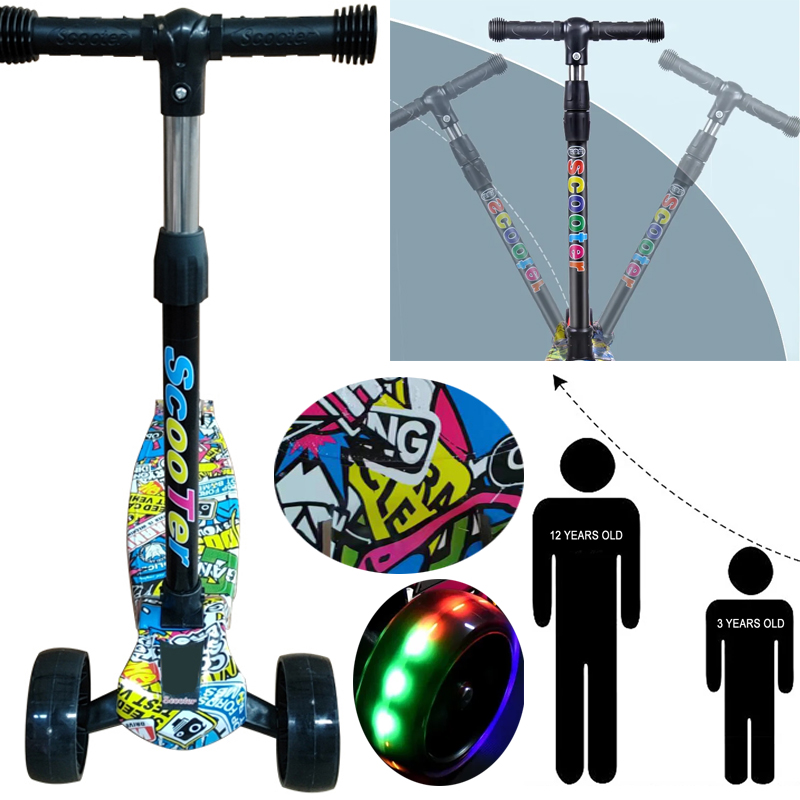What to Look for When Buying a Kids' Scooter
Shopping for a kids' scooter can be an exciting yet daunting task. With a multitude of options available on the market, it's essential to consider several factors to ensure you choose the right scooter for your child's age, size, and skill level. Here’s a comprehensive guide to help parents navigate this process.
1. Age Appropriateness
One of the first things to consider when selecting a scooter is your child's age. Many manufacturers categorize scooters for specific age groups. For younger children, scooters typically have three wheels for added stability, while older kids might be ready for a two-wheeled scooter. Generally, scooters for kids aged 3-5 are smaller and have lower decks, while those intended for children aged 6 and up can support more weight and are built for more advanced riding skills.
2. Weight Capacity
Every scooter has a specific weight limit, and it's crucial to adhere to this guideline. Check the manufacturer's recommendations to ensure the scooter can safely support your child’s weight. Choosing a scooter that offers a bit more weight capacity than your child's current weight can be a wise choice, especially as children grow quickly.
3. Size and Height Adjustability
The size of the scooter is another important factor. The handlebars should be at a height that allows your child to ride comfortably without stretching or bending excessively. Many scooters come with adjustable handlebars, which can be a great feature as it allows the scooter to grow with your child. Look for models that can be adjusted easily to achieve the right height.
4. Safety Features
lehuo what to look for when buying a kids scooter

Safety is paramount when purchasing a scooter. Look for scooters with features such as non-slip decks, responsive brakes, and good-quality wheels. A wider deck provides better stability while riding. Additionally, consider scooters equipped with hand brakes for greater control, especially for faster models. Helmets and pads are also essential accessories to ensure your child's safety while scooting.
5. Material and Durability
Scooters for kids should be sturdy yet lightweight enough for them to maneuver easily. Common materials include aluminum and high-grade plastic. Aluminum scooters are often durable and can withstand rough handling, while plastic scooters tend to be lighter. Ensure that whichever material you choose, it’s weather-resistant, as this will prolong the life of the scooter.
6. Wheel Type and Size
The wheels play a significant role in how well a scooter performs. Larger wheels typically offer a smoother ride and can handle rough terrain better than smaller wheels. If your child will be riding primarily on smooth surfaces, smaller wheels may suffice. Additionally, consider the material of the wheels – rubber wheels provide better traction compared to plastic ones, which might be more rigid and less forgiving on uneven surfaces.
7. Design and Style
Lastly, children often have their preferences when it comes to colors and designs. Involving your child in the selection process can make them more excited to use their new scooter. Many brands offer a variety of fun designs that can cater to different interests, from favorite characters to vibrant colors.
Conclusion
In summary, when buying a scooter for your child, it’s crucial to consider their age, weight, size, safety features, material, wheel type, and design preferences. By keeping these factors in mind, you can ensure that you choose a scooter that is not only fun but also safe and suitable for your child's needs. After all, a great scooter can provide hours of entertainment while promoting outdoor activity and physical fitness.
-

 Scoot&RideKids Child Kick Push Scooter 3 Wheels with LED Flashing Tilt Lean Boys Girls Scooter
Scoot&RideKids Child Kick Push Scooter 3 Wheels with LED Flashing Tilt Lean Boys Girls Scooter




- 4
$33.17 -

 Scoot&RideKids Scooter Child Kick Flashing LED Light Up 3 Wheel Push Adjustable Folding 3
Scoot&RideKids Scooter Child Kick Flashing LED Light Up 3 Wheel Push Adjustable Folding 3- 0
$25.52 -

 Scoot&RideKids Scooter Child Kick Flashing LED Light Up 3 Wheel Push Adjustable Folding 2
Scoot&RideKids Scooter Child Kick Flashing LED Light Up 3 Wheel Push Adjustable Folding 2- 0
$33.17 -

 Scoot&RideKids Scooter Teens Foldable Kick Push Scooter Adjustable Height Safe 2 Wheels
Scoot&RideKids Scooter Teens Foldable Kick Push Scooter Adjustable Height Safe 2 Wheels




- 4
$49.99
Meet our partners and discover what powers their creativity!
When you register for a Lohas scooter, you will receive a 10% discount on your first order and can be notified of sales, new product launches and other offers in advance.









